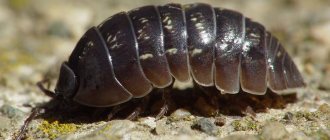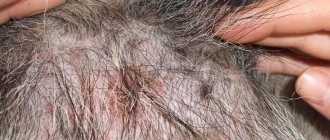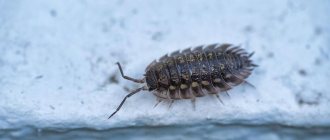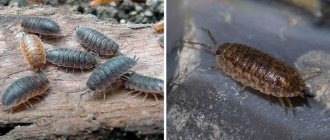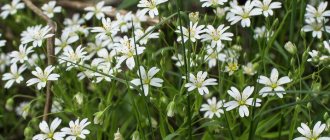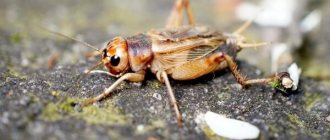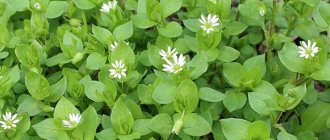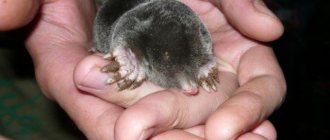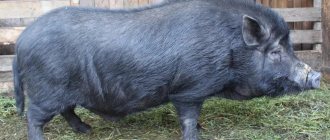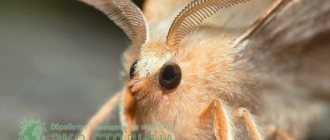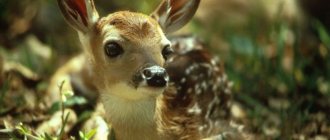In fact, woodlice is not an insect, but an ancient crustacean, which, under the influence of evolution and a changing climate, has decreased in size many times and adapted to life on land, while maintaining its craving for high humidity. They are found almost all over the world. Woodlice most often settle in places where there is an ideal combination of high humidity and heat. They feed mainly on plant humus, which can be found in abundance both in human homes and in the open air. In nature, woodlice can live in the garden, in the forest, near swamps and on the banks of reservoirs. In apartments, houses, hotels and other likely places, they mainly choose bathrooms, kitchens and rooms where the microclimate meets their needs.
Where do these crustaceans that look like insects come from in the apartment?
- They crawl from warm basements, from attics and from neighbors through ventilation and ducts where communications are laid.
- They are accidentally brought along with purchases from stores where there were conditions suitable for their life.
- They enter the apartment along with purchased indoor plants and bouquets of flowers.
- They independently crawl along walls from the street and penetrate through open windows, vents, and leaky joints of loggia frames.
- If the apartment is rented or purchased on the secondary housing market, then woodlice may be its original inhabitants and could have appeared here long before you appeared.
If woodlice enter the premises through communications or due to dilapidated repairs, then, in addition to baiting the pests, it is also necessary to make repairs, otherwise the woodlice will again make their way to you the same way after some time.
Woodlice: photo
Woodlice: photo.
Description of the pest
Name: Woodlice Lat.:
OniscideaClass: Higher crayfish - Malacostraca Order: Isopods - Isopoda
| Habitats: | with high humidity |
| Nutrition: | scavengers |
| Means of destruction: | various chemicals |
In fact, the idea that wood lice are insects is wrong. These small creatures belong to the suborder of crustaceans and are considered one of its most developed representatives.
What do woodlice look like?
Woodlice: structure.
Most woodlice are small in size and their body length is from 1 to 2.5 cm. The color of these creatures is dominated by gray and brown shades. The body of woodlice has an oval, slightly flattened shape and is covered with an arched chitinous shell, divided into movable segments.
Animals have two pairs of antennae, one of which is much better developed than the other. The woodlice's visual organs are located on the sides of the head. The jaws of these crustaceans are intended exclusively for soft food, while the upper pair is devoid of tentacles.
Woodlice have 7 pairs of thoracic limbs. All limbs have the same structure and are used for walking.
How woodlice breathe
Woodlice on plants.
Unlike most other species of crustaceans, woodlice have adapted to life on land. The breathing of these animals is carried out using gills, which are located in the cavity of the internal branches of the thoracic legs.
Woodlice get their oxygen from the moisture covering their gills. That is why they settle in places with high levels of humidity. It is worth noting that some species have even learned to breathe ordinary atmospheric oxygen.
Fighting methods
Any means are good in pest control. But in certain situations, efforts may be in vain. Let’s say, trying to destroy makrush at the dacha yourself, you can only aggravate the situation. Even if most of the individuals fall into the trap or “taste” the insecticide, a considerable number of them will remain in the corners. They will continue to actively spread, annoying the owner of the territory. To solve this problem, a comprehensive approach is required. For a guaranteed result, it is better to contact experienced disinfectors. They know well which products will work effectively and will allow you to remove pests from your home forever.
People have many ways to deal with woodlice in an apartment. These white, or less often dark brown, insect pests easily die if poison is used against them. But they also multiply at a considerable speed. This is why standard methods of combating them may not be effective. Faced with the lack of results, the owner of a private home has no choice but to turn to professionals . They are able to determine exactly where the pests are coming from.
Chemicals
The market today offers an impressive list of products aimed at exterminating woodlice and other household creatures. The most popular today are:
- "Dichlorvos";
- "Mole";
- "Tetrix".
The gel from the German manufacturer Schabengel has also proven itself well. This is a special bait designed for crustaceans. It is used to poison pests that appear in secluded places in the home.
The use of these substances may be unsafe, so you must strictly follow the instructions included with each drug. Special precautions are required when small children and animals live in the house. After treatment, be sure to ventilate the room and wash all surfaces.
Folk recipes
Such methods are no less effective. Parasites are effectively eliminated without any safety concerns. There are several techniques that have proven positive:
- Liquid kvass with boiling water. Take 100 g of the first component and add to 500 ml of water. Stir and spray in the bathroom and other areas where woodlice have infested. The next day you can wash the surfaces.
- Boric acid. Prepared in the same way as the previous product.
- Chlorine. Take 40 g of bleach per liter of water, after which the walls and floors are washed with the resulting solution.
- A mixture of tobacco, soda and pepper. These components are diluted in a liter of water, after which the pest areas are watered. Leave for a while, then wash with water and chlorine.
- Salt. To kill parasites, just sprinkle it into cracks and corners.
- Birch broom. Place a few pieces in the corners and leave overnight. They attract insects in an amazing way. In the morning all that remains is to throw away the trap.
- Potato. They make a hole in the tuber, and then place it in places where parasites accumulate. During the night, a large number of individuals climb inside. During the day, the tubers are thrown away.
- Lime. One of the most effective components for controlling woodlice in an apartment. Place a little quicklime bleach in a bucket and extinguish it with water. Carefully lay out the pieces in areas where woodlice live. After this, close the door tightly and leave the room for several days. It is not recommended to enter it during this time.
All of the above methods adversely affect the area where insects live, so they are likely to leave the occupied area. At the same time, it is not enough to get rid of parasites once. The cause of their appearance must be identified and eliminated, otherwise a re-invasion cannot be avoided.
Woodlice lifestyle and habitat
Saw woodlice
Not really
Despite their excellent adaptability to life on land, woodlice depend on humidity levels. In some species this dependence is stronger, in others it is weaker, and for this reason some of them settle on the coast of fresh and salt water bodies, while others can feel great in greenhouses, greenhouses, basements and bathrooms.
Where can you find woodlice?
Woodlice are active exclusively at night and therefore it is difficult to encounter them during the day. During daylight, animals hide in shelters that reliably protect them from harmful sunlight. Having settled near a person, the woodlice also chooses a safe place to hide.
In the wild, woodlice can be found:
- under stones;
- inside old, rotten stumps;
- in fallen leaves;
- under rotten trees lying on the ground.
Around people:
- greenhouses and cellars;
- cracks in the walls;
- voids behind baseboards;
- walls of sewer pipes.
What do woodlice eat?
Like other representatives of the crustacean suborder, woodlice are scavengers. In the natural environment, their diet mainly consists of decaying leaves, young shoots and rhizomes. Sometimes healthy parts of plants may also appear on their menu.
Woodlice on a plant.
Woodlice that have settled in residential areas easily adapt and feed on everything they find. The diet of “domestic” woodlice may include:
- small food residues;
- scraps of toilet paper;
- fungus and mold formed on various surfaces;
- soap scum.
Prevention measures
Woodlice love water very much. To prevent them from coming to a person’s home again, he should control the humidity in his home. To do this, you should always leave the bathroom open or ventilate it after each bathing, as well as any manipulations that involve interaction with water. Attention must also be paid to the floor surface. Once a day it must be wiped dry. In general, cleaning in this area should be meticulous. The condition of the areas under the sink, bathtub and toilet should be monitored.
Pests may also infest other rooms. If pots with houseplants are placed here, water may accumulate in the trays. It should be poured out in a timely manner and the surface of the product should be wiped. Another important rule is to dispose of garbage in a timely manner.
Washed clothes should be dried outside or on the balcony, but not in the bathroom. Any cracks and crevices in the walls should be sealed, and leaks should be repaired. If possible, it is better to install a hood in the bathroom. This way, any factors that could contribute to the appearance of woodlice can be eliminated. Keeping your apartment clean is the key to getting rid of parasites. Moisture will not appear if the walls and floor are dry.
Thus, there is nothing complicated in the manipulations to combat woodlice. If you follow these tips, unwanted guests will not appear in the house, and those that already exist will disappear once and for all.
How do you like the article?
Peculiarities of woodlice reproduction
Woodlice and offspring.
Reproduction in these small crustaceans occurs in a very interesting way. First, copulation occurs and the female's testes are filled with seed. After some time, the female molts, and her body transforms slightly.
After such a restructuring of the body, one part of the seed fertilizes the eggs, while the other continues to be stored in the testes. When the first fertilized eggs are carried and hatched, the remaining seed fertilizes a new batch. It turns out that one copulation allows you to get two broods of small woodlice.
Woodlice habitat
When choosing a place to live, woodlice prefer warm and humid areas. They can be found not only near reservoirs, but also in steppe or even desert areas. The habitat of these crustaceans extends over almost the entire world, but the greatest species diversity is noted in regions with a warm and humid climate.
In cooler climates, woodlice are more likely to live near people. These small crustaceans can be found in places such as:
- greenhouses;
- greenhouses;
- basements;
- cellars;
- bathrooms;
- the inside of old stumps;
- near open garbage and compost pits;
- under fallen leaves or piles of rotting tops;
- under rotten logs and boards.
What harm can woodlice cause?
A small number of these crustaceans are not capable of causing serious harm to humans. But, if a large colony of woodlice has settled nearby, the following problems may arise:
- soil compaction and disruption of air circulation in the root system of plants;
- harming young seedlings;
- infection of plants by various infections and fungi;
- spoilage and contamination of food supplies;
- damage to walls and ceilings in the house.
Despite the possible harm, wood lice can also bring benefits. In the process of their life activity, they enrich the soil with useful substances and make it more fertile.
Danger to humans
According to some statements, woodlice bite, although in fact they are simply physically unable to do so. The fact is that the oral apparatus is designed to process soft food components. If there is no food, and they have to eat the living tissues of some plants, then they manage to do this with great difficulty. Scientists today know a lot about these crustaceans. The main thing is that they do not bite or attack humans. In addition, they are not carriers of dangerous infections, compared to many other insects. In this regard, only one conclusion suggests itself: woodlice do not pose any danger to humans. It should be noted that these living beings are not dangerous not only to humans, but also to other living beings.
The only problem is their unpleasant appearance, which greatly irritates household members. Children who know little about them may be especially afraid of them, although many adults cannot please others with their deep knowledge. Therefore, the main task is to inform a wide range of readers about the benefits and dangers of woodlice. Before you start fighting insects in your home, you need to find out how harmful this insect is.
The most common types of woodlice
The species diversity of woodlice is quite large. There are even giant marine species, the body length of which reaches 30-50 cm. On the territory of Russia you can find the three most common species.
Common armadillo
A small species up to 1 cm long. In case of danger, armadillos are able to curl up into a ball. Thus, their body is completely hidden under a durable shell. The armadillo most often lives in cellars and basements.
Rough woodlice
Unlike the armadillo, she cannot curl up into a ring, but she runs very fast. Rough woodlice is very common in residential buildings and apartments, and causes damage to indoor plants and food products.
Woodlouse Rathke
Representatives of this species live in large numbers in Europe and Russia. Their habitats are most often located in dense urban areas. The body of woodlice of this species is more narrowed and flattened, and the shell is light in color.
In large numbers, woodlice will cause discomfort and harm to indoor flowers. They must be dealt with using accessible methods!
How to get rid of woodlice?
Actually, there is no harm from woodlice, except that they can spread fungus and lichen around the apartment. But this is no longer a very pleasant prospect. So, are there any means to drive woodlice out of your home? The answer is yes.
To get rid of wood lice in the bathroom, you need to make the room bright and dry, and disinfect it regularly.
When cleaning the bathroom, use products containing chlorine and thoroughly wipe all corners and baseboards. Dry the bathroom more often: remember - wood lice need moisture, i.e. in a dry room they will not feel comfortable and will quickly leave your home.
In addition to the simple methods listed, you can buy a special product, such as “Gett” or “Mole”. Do not forget to strictly follow the instructions when using these products so as not to harm your health!
If you find an error, please select a piece of text and press Ctrl+Enter.
